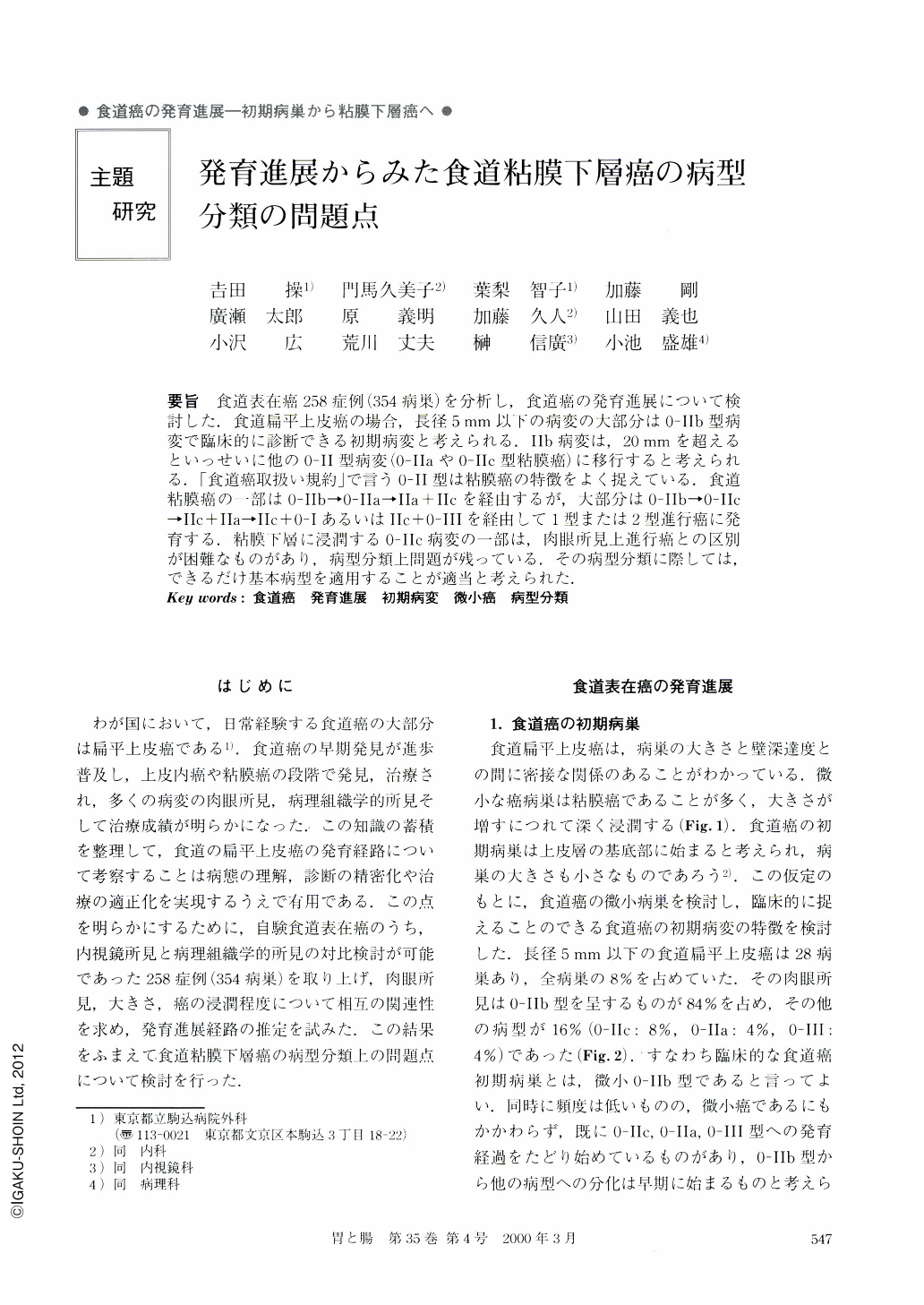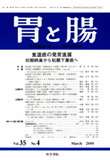Japanese
English
- 有料閲覧
- Abstract 文献概要
- 1ページ目 Look Inside
- サイト内被引用 Cited by
要旨 食道表在癌258症例(354病巣)を分析し,食道癌の発育進展について検討した.食道扁平上皮癌の場合,長径5mm以下の病変の大部分は0-IIb型病変で臨床的に診断できる初期病変と考えられる.IIb病変は,20mmを超えるといっせいに他の0-II型病変(0-IIaや0-IIc型粘膜癌)に移行すると考えられる.「食道癌取扱い規約」で言う0-II型は粘膜癌の特徴をよく捉えている.食道粘膜癌の一部は0-IIb→0-IIa→IIa+IIcを経由するが,大部分は0-IIb→0-IIc→IIc+IIa→IIc+0-1あるいはIlc+0-IIIを経由して1型または2型進行癌に発育する.粘膜下層に浸潤する0-IIc病変の一部は,肉眼所見上進行癌との区別が困難なものがあり,病型分類上問題が残っている.その病型分類に際しては,できるだけ基本病型を適用することが適当と考えられた.
Two hundred and fifty eight cases (354 lesions) with superficial esophageal cancer were included in this study. The analysis of small lesions less than 5 mm in size strongly suggested that a small superficial and flat (type 0-IIb) lesion is the initial lesion of esophageal cancer. Initial lesions probably develop into mucosal cancers such as slightly elevated lesions (type 0-IIa) and slightly depressed lesions (type 0-IIc) of various sizes, especially when the size is over 20 mm. Type 0-IIc lesion is most frequent among mucosal cancers of the esophagus. The gross findings of type 0-IIc mucosal cancers changed into type IIc+IIa, IIc+0-I or IIc+0-III when cancer invasion reached the muscularis mucosae or the submucosa. Thereafter, they invaded the proper muscle layer and gross findings changed into protruded lesions (type 1) or ulcerative lesions (type 2 or 3). At the same time, there were a small number of type 0-IIa mucosal cancers that probably developed from small type 0-IIb lesions and some type 0-I submucosal cancers which had originated from small mucosal cancers. There were some submucoal cancers difficult to classify according to their gross findings. They were frequent among type 0-IIc submucosal cancers. Additional rules were requested for their gross classification.

Copyright © 2000, Igaku-Shoin Ltd. All rights reserved.


